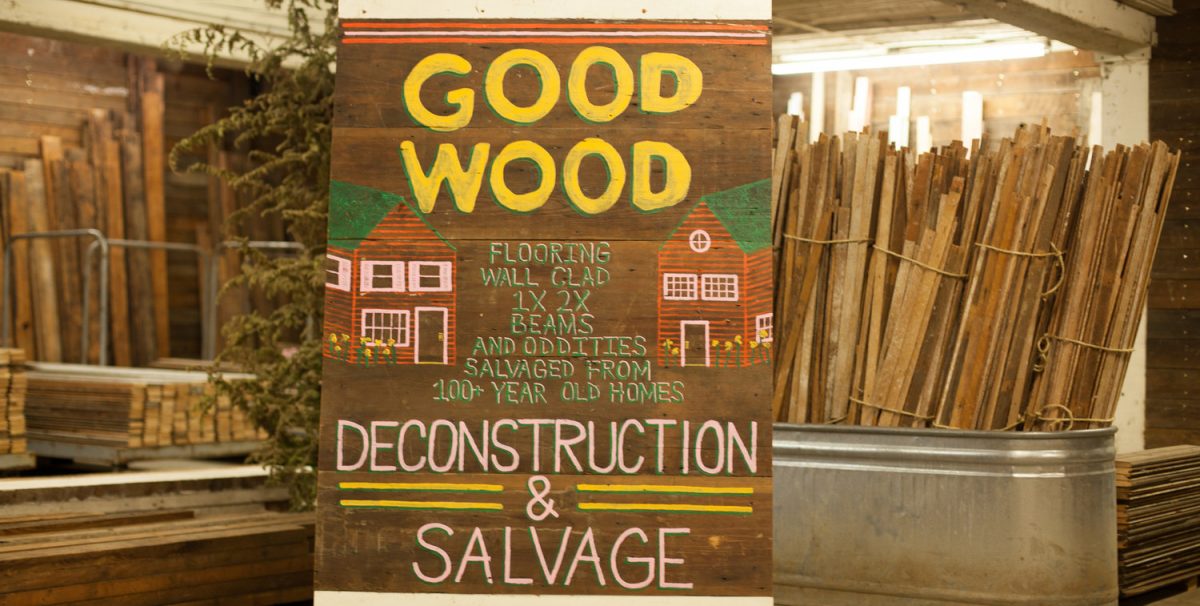
Deconstruction is the process of taking a building apart in the reverse order of construction to skillfully remove valuable building materials and save rich architectural history. It is estimated that buildings consume about 40% of the world’s energy and about 16% of the clean water. This impact is made more severe by careless demolition of entire structures. Deconstruction represents a cost-effective method of waste and material recovery.

Habitat for Humanity builds houses with funding in part from selling reclaimed materials. This group is actually a network of affiliate charity organizations. The groups are unified to the extent that they share a common operational model, but the diversity of the network allows for individual groups to generate new ideas and hone new techniques, which then spread throughout the network.
The EPA estimated that the equivalent of 250,000 homes is disposed of each year, representing about 1 billion board ft. of available salvageable structural lumber. Reusing this lumber could save 4,250,000 trees or 150,000 acres of timberland every year. Much of the salvageable lumber comes from the superior old growth harvest that is mostly unavailable today. This estimate given of lumber salvages is only part of recoverable construction materials. Bricks, blocks, windows, doors, hardware and fixtures, copper tubing, sinks, toilets, shelves, and cabinets are only part of what can be saved and reused. While concrete, steel and other metals can be recycled.
The current way of tearing down homes, buildings, outbuildings, barns, silos, and other structures are with bulldozers or cranes and wrecking balls. Since old, mortised joints are usually stronger than beams, roofs fall, wood splits, walls, bricks and materials shatter and demolition becomes more difficult, wasteful, and takes longer. Structures demolished in this manner can be hard on the environment causing noise, dust, and damage to plants, soil, water sources and nearby structures while filling landfills with billions of tons of reusable materials. Buildings brought down by explosives have an even worse environmental impact.


In terms of home building, conventional construction produces a significant amount of waste; the typical new construction project averages 3.9 lbs. of waste per sq. ft. It is estimated that more houses will be built in the next 50 years than have been built through all human history, which is a lot of potential waste.


